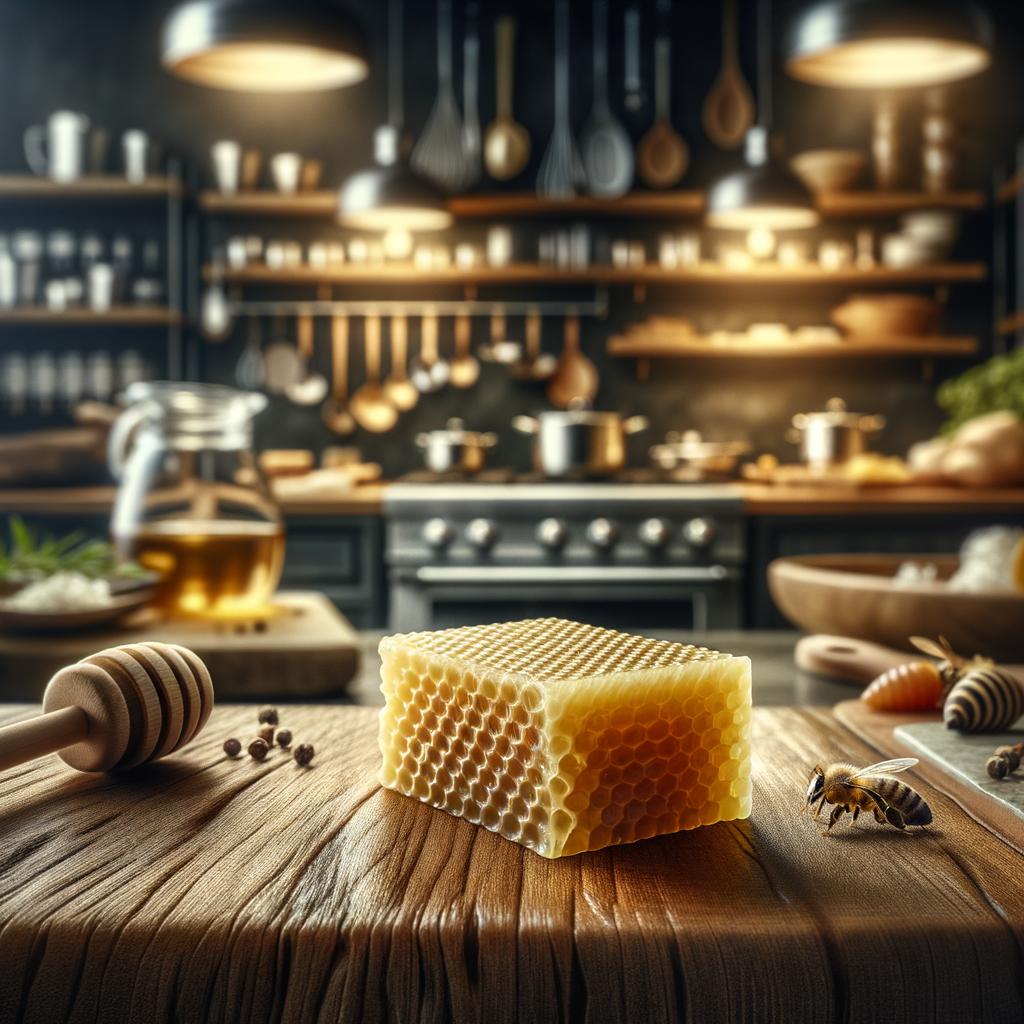Beeswax

Description
Our protagonist today is a natural marvel, a golden gem sculpted by the tireless labor of bees - the Beeswax. This lustrous substance, often ranging in color from a creamy white to deep gold, is a byproduct of the honey-making process, a testament to the diligent work of our buzzing friends. Its texture is firm yet pliable, and it carries a subtly sweet aroma reminiscent of honey and floral fields, a whisper of the bees' nectarous journey.
A unique characteristic of beeswax that sets it apart from other waxes is its inherent antibacterial properties. This, along with its non-toxic nature, makes it a preferred choice in various applications, from food preparation to personal care products.
Primary Uses
Beeswax is a versatile ingredient with a rich tapestry of uses. In the culinary world, it often finds its place as a coating for aging cheese, protecting it from unwanted mold and moisture loss. It's also used as a natural food wrapper, a sustainable alternative to plastic cling film. Some traditional sweets and candies also use beeswax as a glazing agent, giving them a delightful glossy finish.
Beyond the kitchen, beeswax is widely used in natural cosmetics, candles, and even as a furniture polish. Its medicinal properties have been harnessed in traditional healing to treat minor burns and wounds, and it's even used in religious ceremonies, most notably in Orthodox and Catholic churches where beeswax candles are lit as a symbol of divine light.
History
The history of beeswax is as rich and fascinating as the substance itself. It's been found in the tombs of ancient Egyptians, used in the mummification process, and in Roman times, it was a valuable trade commodity. In medieval Europe, beeswax was so highly prized that it was often used as a form of payment. The romantic notion of candlelit dinners can be traced back to our humble beeswax, which was the primary material for making candles before the advent of electricity.
Over time, the use of beeswax has evolved, but it remains an integral part of our lives. Folklore abounds with stories of beeswax. In some cultures, it's believed that beeswax candles can purify the air and ward off evil spirits.
Nutritional Information
While beeswax is not typically consumed for its nutritional value, it does contain traces of Vitamin A, beneficial for skin health. However, its real value lies in its health-promoting properties when used externally. Its antibacterial nature aids in healing, and its anti-inflammatory properties can soothe irritated skin.
Compared to paraffin wax, a common alternative, beeswax is a safer and more sustainable choice. It's completely natural, non-toxic, and biodegradable, making it a darling of the eco-conscious world. The humble beeswax, with its golden hue and sweet aroma, is a testament to the miracles of nature and the tireless work of our buzzing little friends.

